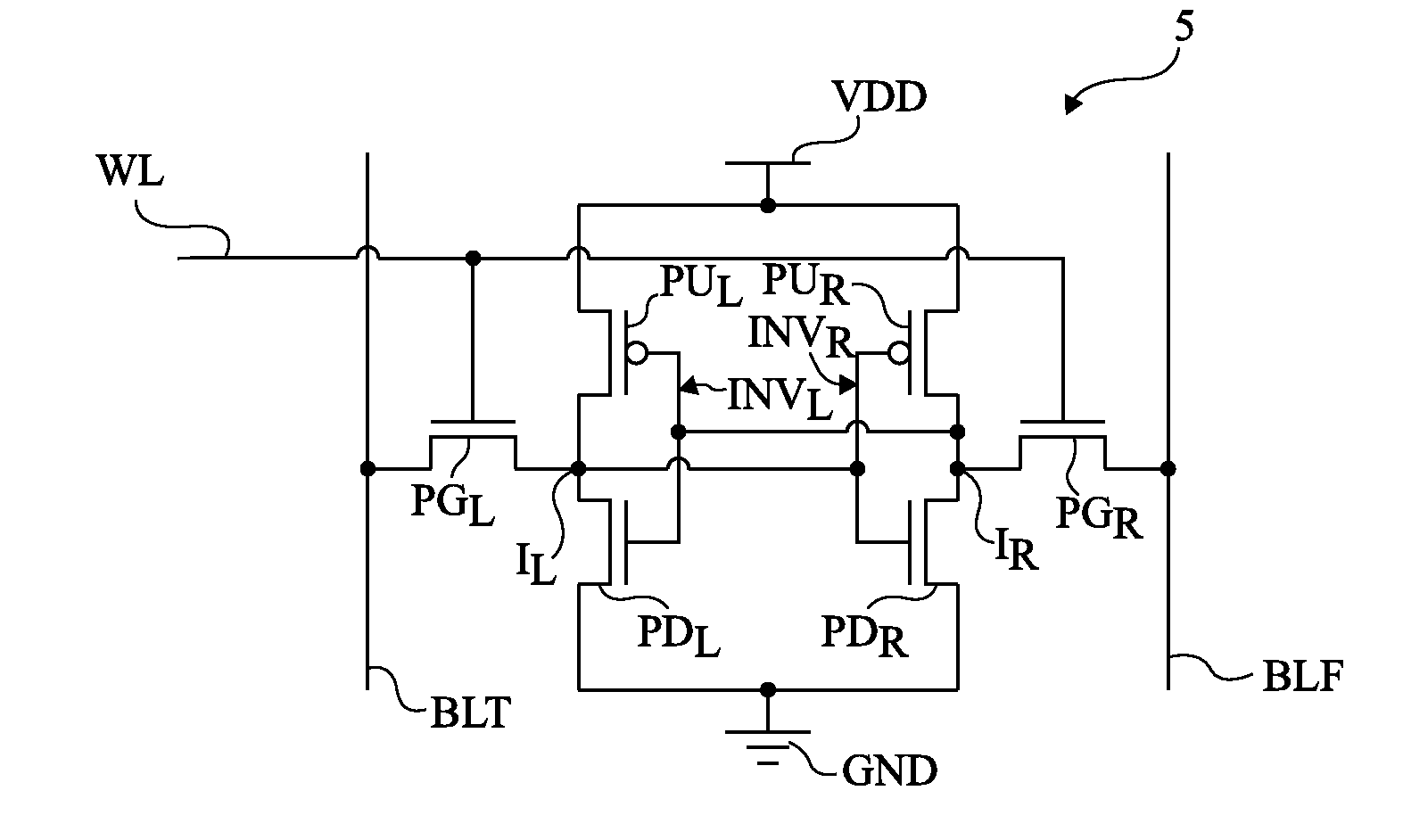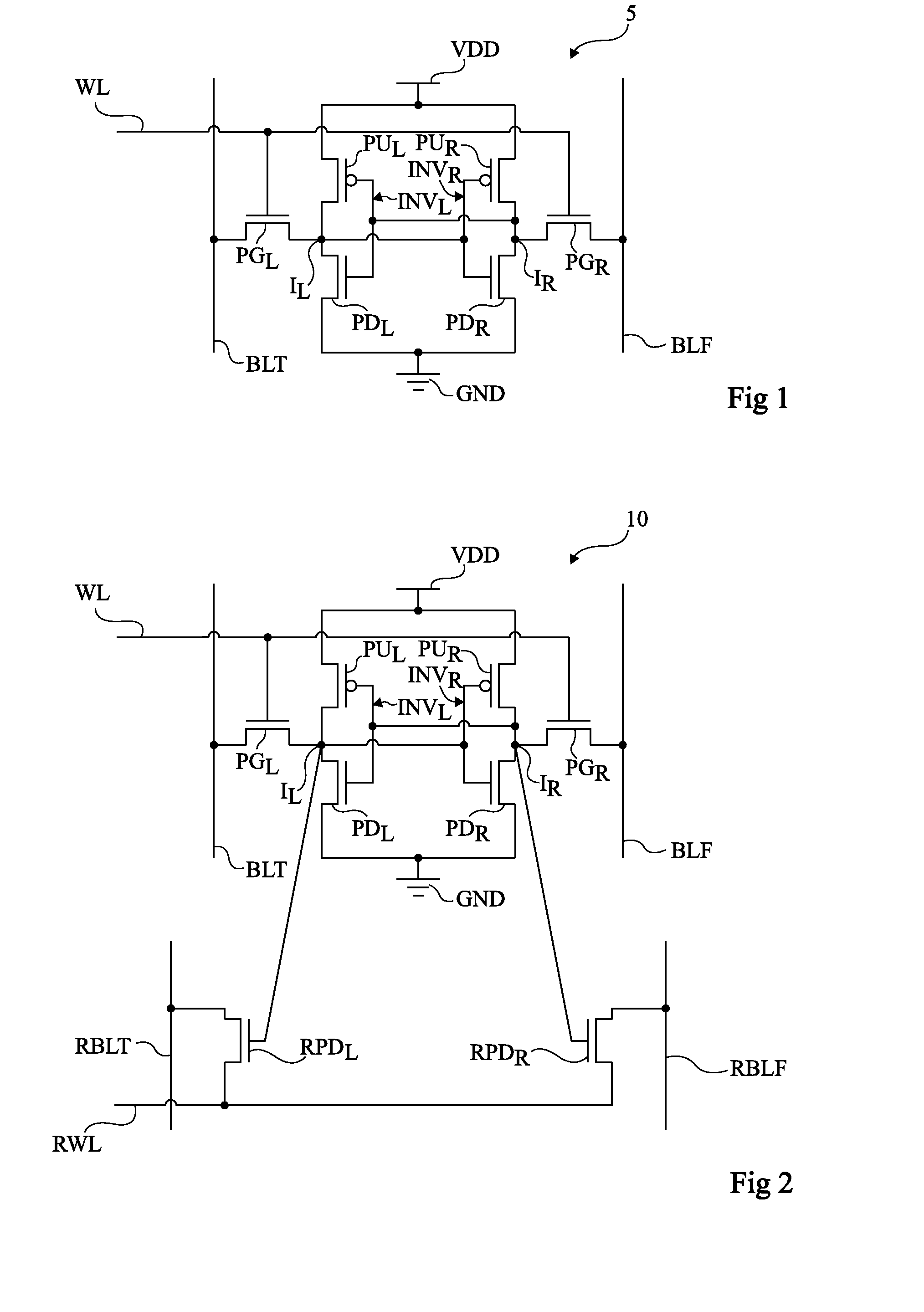Volatile Memory with a Decreased Consumption
a volatile memory and consumption technology, applied in the field of integrated circuits, can solve the problems of critical factors such as consumption of the integrated circuit comprising a volatile memory, data stored in the memory cells is at risk of being lost, and memory is called volatil
- Summary
- Abstract
- Description
- Claims
- Application Information
AI Technical Summary
Benefits of technology
Problems solved by technology
Method used
Image
Examples
Embodiment Construction
[0046]For clarity, the same elements have been designated with the same reference numerals in the different drawings. In the following description, expression “conduction terminal” of a MOS transistor indifferently designates the MOS transistor source or drain.
[0047]The memory cells according to the embodiments described hereinafter may be powered at a decreased power supply voltage VDD. As an example, voltage VDD may be on the order of 400 mV, especially when the memory cells are formed in a technology for which the channel length of MOS transistors is 32 nm. In particular, the memory cells according to the embodiments described hereinafter are capable of operating under the MOS transistor threshold voltage.
[0048]FIG. 4 shows an embodiment of a volatile memory cell 20. As compared with memory cell 10 shown in FIG. 2, memory cell 20 comprises two additional MOS transistors. Transistor PGL of memory cell 10 is replaced with two N-type MOS transistors, PG0L and PG1L. The gate of trans...
PUM
 Login to View More
Login to View More Abstract
Description
Claims
Application Information
 Login to View More
Login to View More - R&D
- Intellectual Property
- Life Sciences
- Materials
- Tech Scout
- Unparalleled Data Quality
- Higher Quality Content
- 60% Fewer Hallucinations
Browse by: Latest US Patents, China's latest patents, Technical Efficacy Thesaurus, Application Domain, Technology Topic, Popular Technical Reports.
© 2025 PatSnap. All rights reserved.Legal|Privacy policy|Modern Slavery Act Transparency Statement|Sitemap|About US| Contact US: help@patsnap.com



